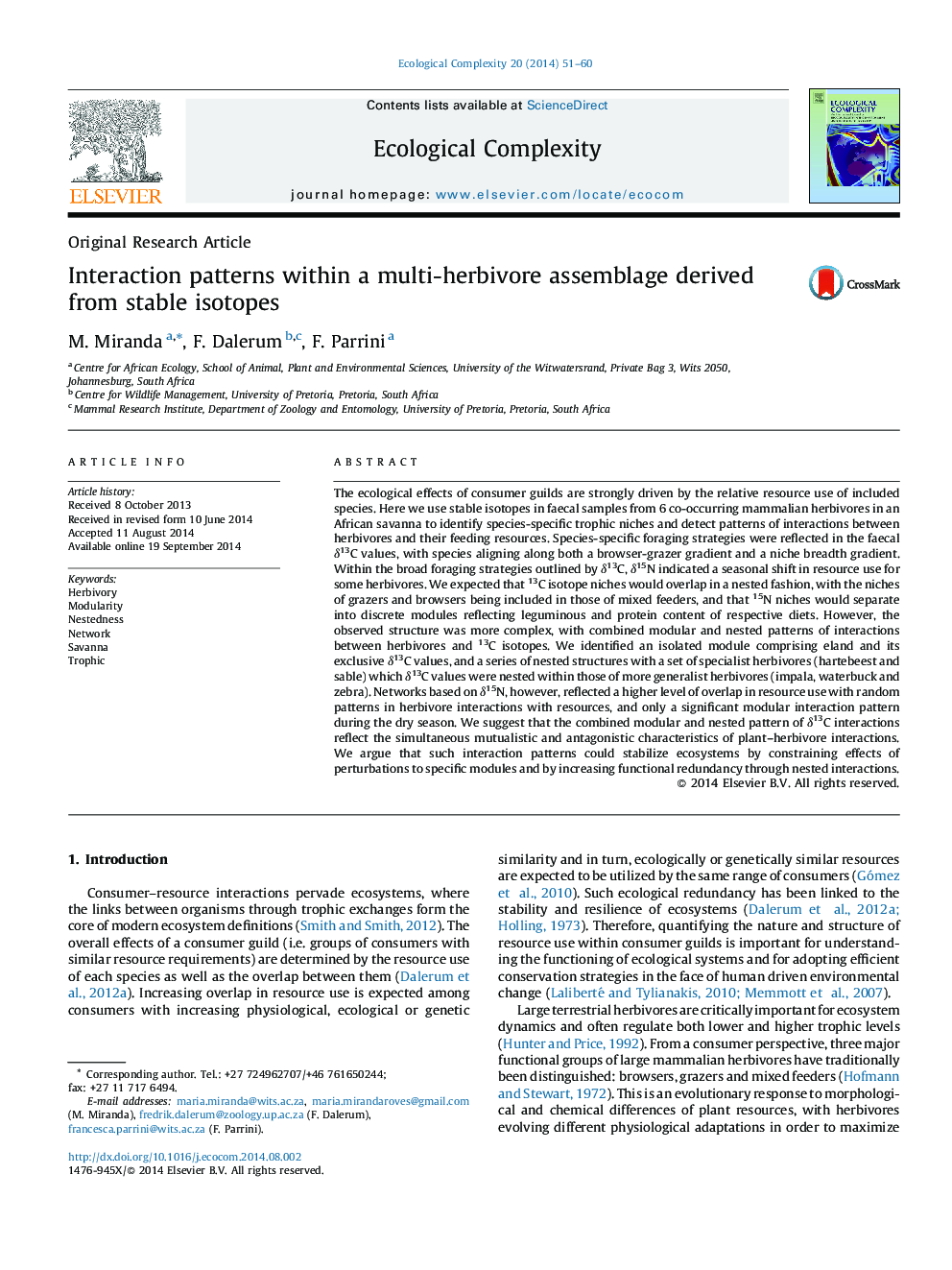| کد مقاله | کد نشریه | سال انتشار | مقاله انگلیسی | نسخه تمام متن |
|---|---|---|---|---|
| 4372356 | 1617094 | 2014 | 10 صفحه PDF | دانلود رایگان |
عنوان انگلیسی مقاله ISI
Interaction patterns within a multi-herbivore assemblage derived from stable isotopes
ترجمه فارسی عنوان
الگوهای تعامل در یک مجموعه چند گیاهنده از ایزوتوپ های پایدار حاصل می شود
دانلود مقاله + سفارش ترجمه
دانلود مقاله ISI انگلیسی
رایگان برای ایرانیان
کلمات کلیدی
گیاهخواری، مدولار، نستله، شبکه، ساوانا، تظاهرات،
موضوعات مرتبط
علوم زیستی و بیوفناوری
علوم کشاورزی و بیولوژیک
بوم شناسی، تکامل، رفتار و سامانه شناسی
چکیده انگلیسی
The ecological effects of consumer guilds are strongly driven by the relative resource use of included species. Here we use stable isotopes in faecal samples from 6 co-occurring mammalian herbivores in an African savanna to identify species-specific trophic niches and detect patterns of interactions between herbivores and their feeding resources. Species-specific foraging strategies were reflected in the faecal δ13C values, with species aligning along both a browser-grazer gradient and a niche breadth gradient. Within the broad foraging strategies outlined by δ13C, δ15N indicated a seasonal shift in resource use for some herbivores. We expected that 13C isotope niches would overlap in a nested fashion, with the niches of grazers and browsers being included in those of mixed feeders, and that 15N niches would separate into discrete modules reflecting leguminous and protein content of respective diets. However, the observed structure was more complex, with combined modular and nested patterns of interactions between herbivores and 13C isotopes. We identified an isolated module comprising eland and its exclusive δ13C values, and a series of nested structures with a set of specialist herbivores (hartebeest and sable) which δ13C values were nested within those of more generalist herbivores (impala, waterbuck and zebra). Networks based on δ15N, however, reflected a higher level of overlap in resource use with random patterns in herbivore interactions with resources, and only a significant modular interaction pattern during the dry season. We suggest that the combined modular and nested pattern of δ13C interactions reflect the simultaneous mutualistic and antagonistic characteristics of plant-herbivore interactions. We argue that such interaction patterns could stabilize ecosystems by constraining effects of perturbations to specific modules and by increasing functional redundancy through nested interactions.
ناشر
Database: Elsevier - ScienceDirect (ساینس دایرکت)
Journal: Ecological Complexity - Volume 20, December 2014, Pages 51-60
Journal: Ecological Complexity - Volume 20, December 2014, Pages 51-60
نویسندگان
M. Miranda, F. Dalerum, F. Parrini,
